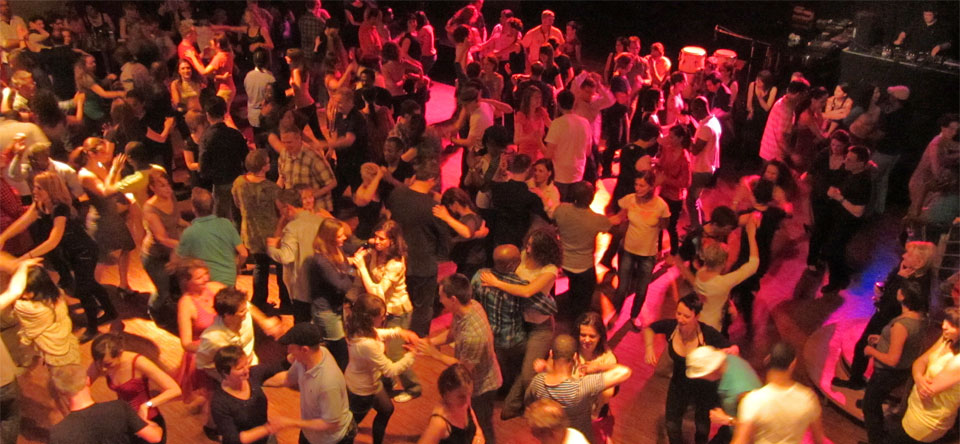Not known Facts About Dance Fridays
Wiki Article
The Ultimate Guide To Dance Fridays
Table of ContentsThe Ultimate Guide To Dance FridaysFascination About Dance FridaysFacts About Dance Fridays UncoveredSee This Report on Dance Fridays
Allow's think of Salsa dancing and songs as a great huge Tree that looks like this: Salsa is danced worldwide while lots of technological aspects of the dance are the exact same across styles (6 steps over 8 beats danced on a quick-quick-slow or slow-quick-quick rhythm), there are several "hallmark" functions of the main designs of Salsa that identify one from the other.Couples taking part in a Casino Rueda dance all steps in unison as called by a Leader. Distinct features of Cuban style salsa are round turn patterns (with "break back" actions on counts 1 and 5) in addition to body activity inspired by traditional Afro-Cuban folkloric dances. Distinct features of Cali style salsa is fast and detailed maneuvering, danced with a solid hand hold connection in between companions.
The origins of the style are a subject of argument, yet it is stated that New York design Salsa dance came from the 1960's as a result of the influx of Latin American emigrants after the Cuban Transformation. Eddie Torres is one of the most popular New York style dancer, being nearly generally attributed with popularizing the design to dance centres outside of New York.
The fundamental rhythm of "On-2" is slow-quick-quick. The "youngest" of the designs of Salsa, L.A. Style (some people have actually called it "West Coast" style) ended up being preferred in the 1990's and has its beginnings in ballroom (Mambo, Swing and Cha, Cha, Cha). Turn patterns lead and comply with techniques are heavily affected by these designs, with the Cross Body Lead being the foundation of the style.
The Of Dance Fridays
Style are execution of turn patterns and figures in the "slot", with the break steps on counts "1" and "5". This style is additionally identified by fancy and commonly detailed arm styling by the follow to accent the "1" and "5" matters. The fundamental rhythm of "On-1" is quick-quick-slow. While Salsa music has strong origins in Cuban, Colombian and Puerto-Rican folkoric traditions, it can not be discounted that all Afro-Latin and Latin American societies have actually added to modern Salsa music as we know it today.It's feasible that due to political reasons the payment of Afro-Cuban society and heritage to modern Salsa in the 1960's and 70's is not commonly recognized, however it can not be ignored the huge payment and influence of the "Queen of Salsa", Celia Cruz (salsa club san francisco). Many thanks to the net and simplicity of access to info, the popularity of Salsa songs, dance and society has spread out like wildfire over the last 30 years and even after that contemporary Salsa musicians proceed to pay homage to the Establishing Fathers and Mom of Salsa.
Today Salsa songs is developed, performed and popular global. In 2000 the influence of Latin American songs and society (not just Salsa) was recognized by the National Academy of Recording Arts and Sciences in the United State and the Latin Grammy Honors were produced. The Latin Grammy's have brought attention to the Salsa Legends and modern Salsa musicians alike
Some Known Facts About Dance Fridays.
identifying qualities of Salsa songs are: 4/4 measure signature, Boy Clave and Tumbao rhythms, Montuno Piano Unless you have a background in music, the above 3 features probably indicate absolutely nothing to you. A much easier way to describe Salsa songs is just how it does NOT seem like various other kinds of Latin American music.Bachata is a straight 4 beat dancing with a prevalence of a syncopated guitara line and a clear lack of any type of "tough" piano, brass (trumpet, trombone) lines. Cha, Cha, Cha looks like Salsa songs one of the most as it seems like "really sluggish" salsa/mambo. salsa club san francisco. Cha, Cha, Cha can be identified by it's emphasis of the double tumbao beat on matters 4 +5 and 8 +1 (the "cha-cha-cha") You have actually been to a Salsa night at a club and you're hooked you like the songs, the power, the look of two dancers gliding across the dance floor implementing cool rotates and turn patterns
It's time for lessons. With so several workshops out there and various designs to pick from, where does a complete novice start? A lot of all new professional dancers choose to discover L.A. "On-1" design slotted Salsa styles are the most common in North America (with some exceptions of some urban centres that still primarily welcome Cuban and Puerto Rican styles) and L (https://www.cheaperseeker.com/u/salsacrazysf1).A
.A. Style will swiftly instruct you the basics of Salsa timing, weight transfer and transform pattern implementation. Many professional dancers, when they have actually had a year or more of dance L.A. Design Salsa under their belts, "switch" to New york city design in order to expand their dancing vocabulary; however several dancers make a decision to stay with simply one design of Salsa and appreciate their time on the dance floor because specific style (salsa club san francisco).
Style and New York Design all being danced in the same club, with most of the professional dancers having the ability to switch from one design to the other from one tune to the next. Despite which style you pick it is very important to adhere to that design until you're really comfortable with the basics of timing, body rhythm this hyperlink and foundation action implementation before thinking about "switching" designs (if you want to).

Report this wiki page